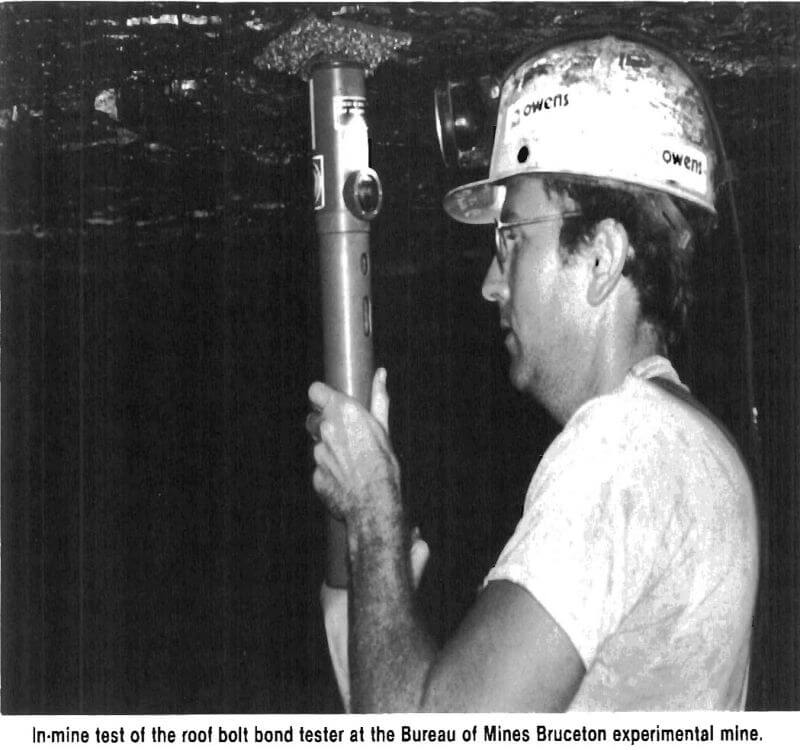A measured pulse of energy is sent into the bolt by a piezoelectric transducer, and the instrument listens for reflected energy. Where the bolt is properly bonded, the energy passes from the bolt, through the resin, and out into the rock mass. Where proper bonding does not exist, a portion of the energy is reflected back along the bolt. The instrument measures the reflected energy and compares it to the original pulse. The amount

of energy reflected back is an indicator of the amount of the bolt surface that is not bonded, and the ratio of energy in the original pulse to the reflected energy can be used in evaluating bond Integrity. This cycle of pulsing and listening is repeated about 200 times per second.
Operation of the tester is simple. The operator turns on the switch, and the instrument automatically Initiates a 4-second, self- check procedure to verify proper operation. The operator then selects the proper bolt length range (2 ½ to 4 feet, or 4 to 8 feet bolt length),and pushes the Instrument firmly over the bolt head. When the coupling force is reached (about 5 pounds) the instrument automatically reads the bolt bond condition.
The instrument has three possible readings: red, yellow, or green, corresponding to “bad” (less than ½ bonded) marginal” (½ to ¾ bonded) and “good” (more than ¾ bonded). The reading is held for 4 seconds, then the instrument resets for the next test.
Operators normally become proficient with the instrument with about ½ hour of instruction and practice. The basic principle of the tester is well established in other industries.
Laboratory tests were followed by underground tests in the Bureau’s experimental mine in Bruceton, PA. In a statistically designed test, 182 bolts with varying degrees of bonding were installed with a roof bolter. Test results were confirmed by overcoring selected bolts. Tester accuracy was over 90%.
Additional tests are being conducted on a wide range of roof rock types and bolt lengths in mines across the U.S. to determine if calibration adjustment for the particular mine roof rock is needed, and to determine instrument durability.
The Bureau group supervisor heading this research is Raymond M. Stateham of the Denver Research Center.
